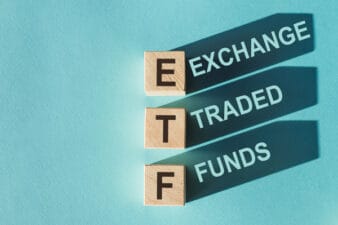Like with all of its peers, it hasn’t been a good time to be an Enerplus Corp. (TSX:ERF)(NYSE:ERF) shareholder. Over the past year, shares are down nearly 60%. Since the beginning of the year, the performance has been much better, but the stock has still declined 27%.
The energy sector is filled with cheap stocks. What makes Enerplus a better choice than some of its peers? Let’s have a closer look.
Good results
Enerplus has operations concentrated in three main areas–the Williston Basin in North Dakota, the Marcellus in Pennsylvania, and in the Waterfloods area in southern Alberta and Saskatchewan. Production is approximately 55% crude oil and natural gas liquids, and 45% natural gas.
Like many of its peers, Enerplus has cut capital expenditures because of today’s tough environment. Capex has declined some 35% compared with this point in 2014. But unlike its peers, Enerplus has actually been able to increase production slightly, guiding towards between 100,000 and 104,000 barrels of oil equivalent in 2015.
This has led to results that are weak, but not a disaster. The company generated $266 million in funds flow over the first six months of the year, and thanks to an aggressive hedging program, it looks like it’ll be able to at least maintain that over the last half of the year, unless crude really falls off a cliff. About 35% of 2016’s production has been hedged at the $65 per barrel level.
These are prudent moves by a good management team. This gives the company some breathing room in case crude doesn’t recover until well into 2016.
Great assets
One of the things I like about Enerplus is the terrific assets it has, especially in North Dakota. This low-cost oil is profitable even in today’s low-priced environment.
The finding and development costs for the North Dakota assets are the lowest in the region, coming in at just over $10 per barrel. Add operational costs, and the company’s netbacks in the second quarter were still $27 per barrel before gains from hedging, and $40 per barrel after. This, combined with further cost cuts and improvement in commodity prices, means the company could actually post up to $100 million in free cash flow in 2015.
Then there’s the company’s gas assets in the Marcellus, which are proving to be long-lasting reserves. Even after producing 188 MMCF of natural gas per day in 2014, further exploration actually increased reserves in the region by nearly 40%. When natural gas recovers, investors will really see Marcellus add to the company’s bottom line.
Balance sheet strength
Of course, none of these assets are much good if Enerplus is about to be crushed under the weight of its debt.
Right now, I’d say Enerplus’s balance sheet is in pretty good shape. The company owes a little more than $1.1 billion in long-term debt, but there are no major repayments due until 2017. Most of the debt isn’t due until well into the 2020s. It also has a $1 billion revolving credit facility that still has about $900 million in available funds to draw against.
The company also pays an attractive dividend of a nickel per share, per month, putting the yield at 7.4%. The total cost of the dividend works out to about $123 million per year, which is sustainable if the price of crude recovers to around $60 per barrel. Enerplus is one of the few mid-sized producers still left paying a dividend.
Enerplus is a solid way to bet on the eventual recovery of both oil and natural gas. The company’s hedging program and balance sheet will help it get through today’s tough market, while investors collect the generous dividend for being patient. And if crude can continue to recover, Enerplus shares should end up much higher.







